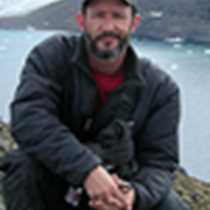Port Lockroy, Gerlache Straight
Our last full day along the Antarctic Peninsula was filled with fun and surprises. Our morning stop was at Port Lockroy or Base A. This was a monitoring base set up during the last days of World War II to keep an eye on the Germans who were patrolling the southern waters as well. A series of bases were built during Operation Tabarin. Base A later named Lockroy was in ruins in the early 1990s before being rebuilt and turned into the post office of the Antarctic Peninsula. Thousands of visitors every summer shop for souvenirs of drop off postage that supports the British Antarctic Heritage Trust. The trust is in charge of the remaining bases not used for scientific research.
The afternoon would be spent on the ship but not inside the comfortable and warm interior. The search for whales was successful early in the afternoon as the ship made its way to the Gerlache Straight where dozens of killer whales were seen. At first it seemed that the whales were not moving quickly in any particular direction, so we might be able to get close to them with the ship. We were right. The pod turned out to be a super pod of over 80 whales in small family groups that were moving slowly and in circles rather than in a determined direction. Once we were closer things became more interesting. A minke whale was seen swimming very close to the killers and then a humpback, no wait; two humpbacks were seen swimming towards the killers. Orcinas orca, the scientific name for killer whales means devilfish from below. Named by the Greeks for their perceived savagery towards other whales they became known as the killer of whales. Not all groups or types kill and eat larger marine mammals. These “Type B” also called the Gerlache killers are not whale killing types. But how did the minkes and humpbacks know this? The three whale species were slowly moving and many animals approached the ship in the calm conditions. There were many shouts of joy as the humpback at one point swam upside towards the bow of the ship. It was behavior seldom seen even by the staff and officers aboard the National Geographic Explorer.
It was a fitting end to our amazing voyage along the Antarctic Peninsula. From this point we would head north to South America.




